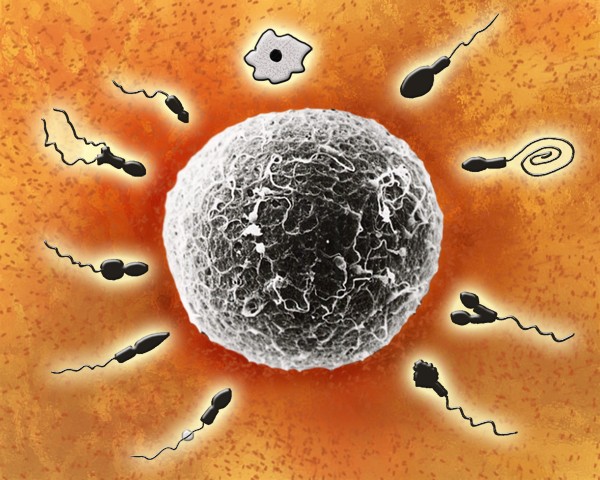 Our
human future will only be as healthy as our sperm. Yet this isn’t just a
puzzling curiosity but is rather an urgent concern that affects
reproduction, possibly even our species’ future.
Our
human future will only be as healthy as our sperm. Yet this isn’t just a
puzzling curiosity but is rather an urgent concern that affects
reproduction, possibly even our species’ future.
Human and animal studies suggest that a crucial culprit is a common class of chemical called endocrine disruptors, found in plastics, cosmetics, couches, pesticides and countless other products. Because of the environmental links, The New Yorker once elegantly referred to the crisis as “silent sperm,” and innumerable studies over 25 years add to the concern that the world’s sperm is in trouble.
And so are men and boys. Apparently related to the problem of declining semen quality is an increase in testicular cancer in many countries; in undescended testicles; and in a congenital malformation of the penis called hypospadias (in which the urethra exits the side or base of the penis instead of the tip). These problems are often found together and are labeled testicular dysgenesis syndrome.
There is still disagreement about the scale of the problem, and the data isn’t always reliable. But some scientists are beginning to ask, At some point, will we face a crisis in human reproduction? Might we do to ourselves what we did to bald eagles in the 1950s and 1960s?
“I think we are at a turning point,” Niels Erik Skakkebaek, a Danish fertility scholar and pioneer in this field, told me. “It is a matter of whether we can sustain ourselves.”
One recent study found that of sperm donor applicants in Hunan Province, China, 56 percent qualified in 2001 because their sperm met standards of healthiness. By 2015, only 18 percent qualified.
“The semen quality among young Chinese men has declined over a period of 15 years,” concluded the study, which involved more than 30,000 men.
Perhaps even more alarming, Canadian scientists conducted a seven-year experiment on a lake in Ontario, adding endocrine disrupting chemicals and then observing the impact on fathead minnows. The chemicals had a devastating impact on males, often turning them into intersex fish, with characteristics of both sexes but incapable of reproducing.
The crisis for male reproductive health seems to begin in utero. Male and female fetuses start pretty much the same, and then hormones drive differentiation of males from females. The problem seems to be that endocrine disrupting chemicals mimic hormones and confuse this process, interfering with the biological process of becoming male.
 The
numbers are extremely troubling. Scientists say that approximately 90%
of sperm in a typical young man are misshapen, meaning they are unable
to swim correctly.
The
numbers are extremely troubling. Scientists say that approximately 90%
of sperm in a typical young man are misshapen, meaning they are unable
to swim correctly.
How should we protect ourselves? Swan said she avoids plastics as much as possible, including food or drinks that have touched plastic or been heated in plastic. She recommends eating organic to avoid pesticide residues and avoiding Tylenol and other painkillers during pregnancy. Receipts from thermal printers, like at gas pumps and A.T.M.s, are also suspect. When in doubt, she consults guides at ewg.org/consumer-guides.
Yet this isn’t just a matter of individual action but is also a public policy issue that affects tens of millions of people, their capacity to reproduce and their health and life expectancy.
The stakes are real. Our human future will only be as healthy as our sperm.
